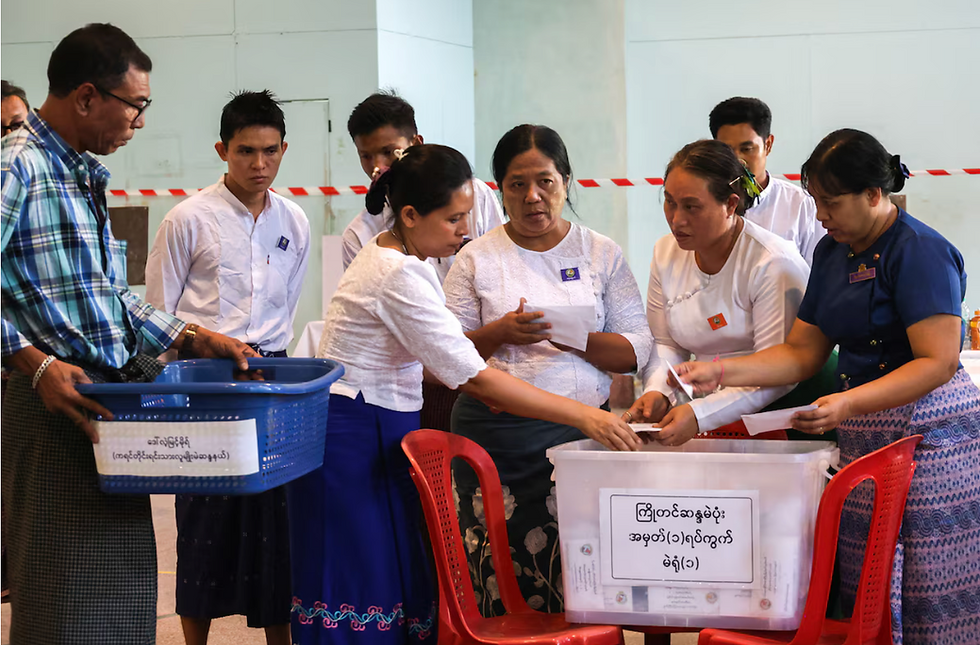The Rohingya Struggle: Statelessness, Genocide, and Lost Livelihood
- Human Rights Research Center
- Jan 24, 2023
- 3 min read
Updated: Jan 25, 2023
January 24, 2023
The Rohingya Muslims have faced numerous horrors throughout history, most recently fleeing a genocide in their home of Myanmar in 2017. Since the mass killings began six years ago, hundreds of thousands of Rohingya have fled from the Rakhine state to neighboring Bangladesh in search of safety, protection, and shelter. Earlier this month, the United Nations High Commissioner for Refugees (UNHCR) reported over 982,000 refugees remain in Bangladesh under inadequate conditions. Notably, in the past few years several devastating fires have broken out in Cox’s Bazar, the country’s largest refugee camp – the worst in March 2021 resulted in mass casualties and injuries, along with the destruction of thousands of shelters and facilities. Unfortunately, this isn’t the first time the Rohingya have made their way across that border and suffered.
In 1977, Myanmar (then Burma) deemed ethnic Rohingya “illegal” and began an operation that included mass arrests, persecution, and extreme violence. Many fled to Bangladesh, only to be forcefully repatriated to Myanmar over the following years, returning to face the 1982 Citizenship Act, which stripped Rohingya of any citizenship rights. In 1989, an increased military presence was established in the Rakhine state, allegedly involving the relocation, forced labor, rape, torture, and executions of the Rohingya, resulting in another mass exodus of 250,000 refugees. Although twenty refugee camps were created in southwestern Bangladesh in response to the influx, the government signed yet another agreement with Myanmar to repatriate all refugees.

Unsurprisingly, with nearly a million refugees currently living in Bangladesh, the government is eager to repatriate the Rohingya to Myanmar. While the two governments signed an initial repatriation agreement in November 2017, implementation has been delayed as the international community and human rights organizations criticized the forced return and lack of protections for the Rohingya people. Bangladesh held several dialogues about repatriation and instead developed connections with other countries to support the refugees. Today, the struggle continues, and Bangladesh fails to support the existing refugees in its borders.
The government gave control of the Cox’s Bazar refugee camp to its Armed Police Battalions (APBn) in 2020, to “ensure security of Rohingyas”. However, on January 17, 2023, Human Rights Watch published an article on the rampant harassment, extortion, and abuse of Rohingya refugees by the APBn officials operating in the camps. Refugees have even claimed collusion of APBn personnel with camp gangs and their engagement in criminal activities. The deteriorating state of the refugee camp is testament to the suffering the Rohingya continue to face.
Finding Bangladesh inhospitable has pushed thousands of Rohingya to risk the voyage south to Malaysia and Indonesia. According to UNHCR, 3,500 refugees attempted to cross the Andaman Sea and the Bay of Bengal in 2022. Of those, 348 were reported dead or missing. Last week, Myanmar arrested 112 Rohingya refugees trying to flee to Malaysia, citing traveling “without legal documents.” In the report given by state-run Global New Light of Myanmar, “The court gave jail terms of two years to five children who were under 13. Seven children older than 13 were sentenced to three years. The rest — 53 men and 47 women — were sentenced to five years’ imprisonment.” At every turn, the Rohingya face injustices and loss.

The 2022 Joint Response Plan for the Rohingya Humanitarian Crisis laid out objectives to work with the government of Bangladesh to support the refugees, not only to supply their basic needs, but helping expand curriculum to children and households so they can develop new livelihoods. In addition, under the Joint Response Plan the UNHCR hopes to establish solid connections with partners and advocacy groups in the region to end detention and further empower the Rohingya. The plan is ambitious and quite expensive, thus only receiving 30% of the total financial backing they needed in 2022.
While the Joint Response is great in theory, can it be executed effectively, especially without full funding in place? Is it the best solution for the immediate issues facing the Rohingya? The complexity of the situation is a major challenge. It is essential that governments and NGOs cooperate with one another, and Myanmar’s military junta ends its reign of terror against the Rohingya people.



